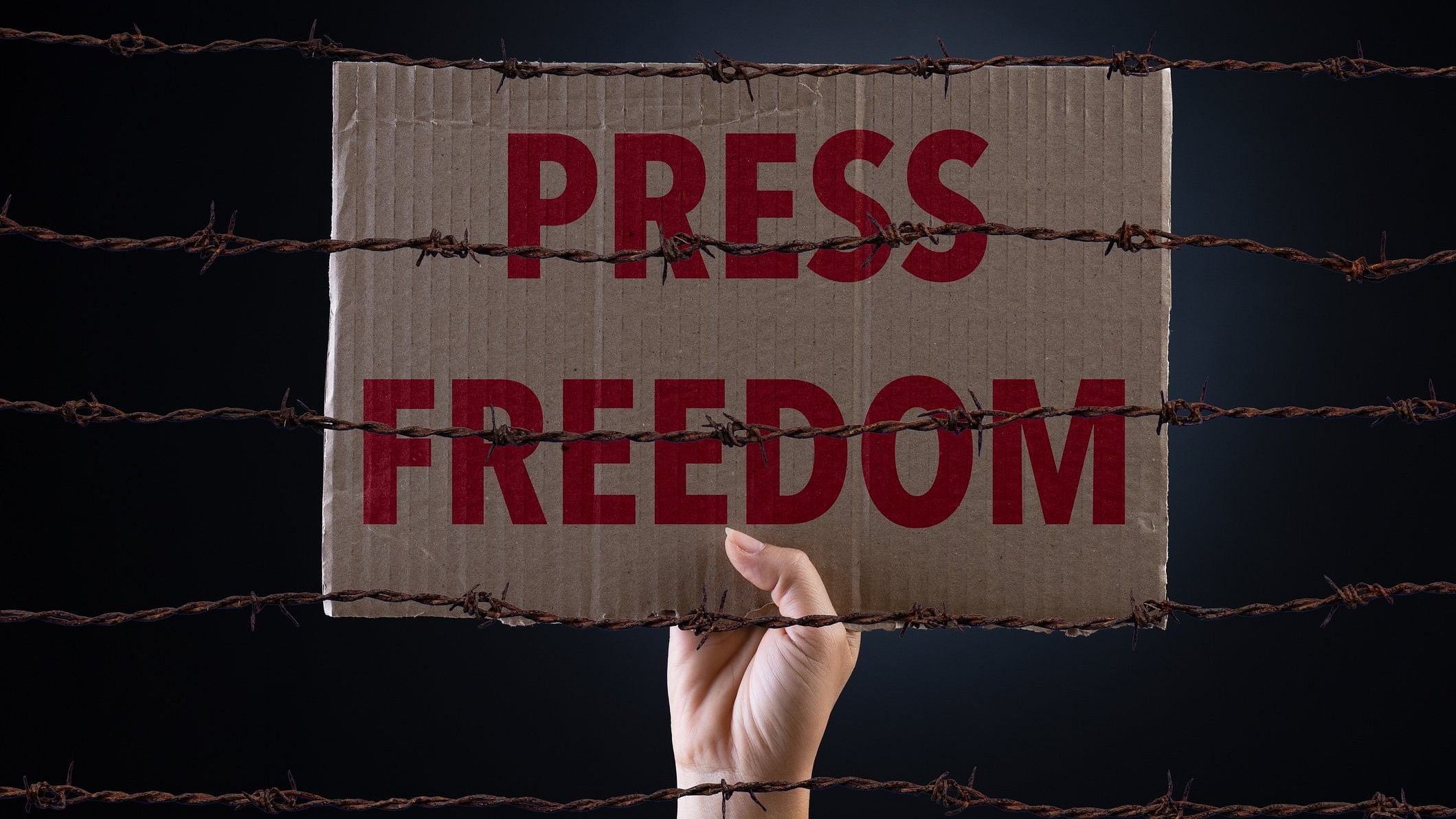
The five journalists who were killed by non-state actors and criminals included two from Uttar Pradesh and one each in Assam, Maharashtra, and Bihar. Image for representation.
Credit: iStock Photo
Guwahati: Five journalists were killed and 226 others were targeted by state agencies, non-state political actors, anti-social elements, and criminals across India during 2023, says the India Press Freedom Annual Report of India Freedom of Expression Initiative, an alliance of press freedom NGOs.
The report was released in New Delhi on Friday on the occasion of World Press Freedom Day.
The five journalists who were killed by non-state actors and criminals included two from Uttar Pradesh and one each in Assam, Maharashtra, and Bihar.
Among the States/Union Territories, 54 journalists from Delhi were targeted, the highest; followed by West Bengal (25); Manipur (22); Uttar Pradesh (20); Kerala (16); Jharkhand (11); Maharashtra and Telangana (eight each); Assam, Bihar and Madhya Pradesh (seven each); Chhattisgarh, Himachal Pradesh, Jammu and Kashmir, Karnataka and Odisha (five each); Andhra Pradesh and Haryana (four each); Punjab (three); Tripura (two); and Tamil Nadu, Rajasthan and Uttarakhand (one each), said the report.
Women journalists:
The report said among the targeted journalists, 30 were female and Delhi reported the highest number with 12; followed by Kerala and Manipur (five each); West Bengal (three), Punjab (two); and Odisha, Telangana and Uttar Pradesh (one each). The majority of these female journalists (23) were targeted by the police, which included arrest/detention (three), registration of FIRs (nine), questioning, assault and raid on houses, the report said.
State, non-state actors:
While 148 journalists were targeted by the State actors, 78 journalists were targeted by the non-State actors including political leaders/activists/criminals.
“Real journalism has become the most dangerous profession in India. It is no longer the fourth pillar of democracy but the first pillar of the target to establish a controlled democracy” said Suhas Chakma, Coordinator of the India Freedom of Expression Initiative and author of the report.
Out of the 148 journalists targeted by State actors, Delhi reported the highest with 51; followed by Manipur and West Bengal (19 each); Kerala (11); Uttar Pradesh (9); Andhra Pradesh, Chhattisgarh, Jammu and Kashmir and Karnataka (4 each); Haryana, Jharkhand, Maharashtra and Punjab (3 each); Odisha, Madhya Pradesh, Telangana (2 each); and Assam, Bihar, Tamil Nadu, Tripura and Uttarakhand (1 each).
The report further said out of these 148 journalists targeted by State actors, 21 journalists were arrested/ detained; FIRs were registered against 47 journalists; 54 journalists were summoned for questioning, or notices issued to reveal sources or passports impounded or their houses raided; and 26 journalists were physically attacked, threatened or harassed by police/public officials.
Delhi reported the highest number of arrests/detentions of four journalists, followed by Haryana (three); Jammu and Kashmir, Madhya Pradesh, Manipur, Punjab and Chhattisgarh (two each); and Karnataka, Tamil Nadu, Telangana, Uttar Pradesh and West Bengal (one each). Two of the arrested/detained journalists were female.
West Bengal reported the highest number of registration of FIRs against journalists with 18, followed by Kerala (nine), Manipur (five), Andhra Pradesh (four), Maharashtra and Uttar Pradesh (three each), Jharkhand (two), Assam, Karnataka and Tamil Nadu (one each).
During 2023, out of the 78 journalists attacked by the non-State actors including political leaders/activists, criminals, etc across the country, the maximum number of attacks on journalists were reported from Uttar Pradesh (11), followed by Jharkhand (eight), West Bengal, Assam, Telangana and Bihar (six each), Madhya Pradesh, Maharashtra, Kerala and Himachal Pradesh (five each); Delhi, Manipur and Odisha (three each); and Haryana, Jammu and Kashmir, Karnataka, Chhattisgarh, Rajasthan and Tripura (one each).
Out of these 78 journalists attacked by non-state actors, 56 were attacked by criminals, anti-social elements, etc and 22 by political leaders or their supporters.
“One of the first signs of establishing controlled democracy is the codification of the censorship regime. During 2023, India saw a number of measures for the codification of censorship i.e. the enactment of the Press and Registration of Periodicals Act, 2023 denying the right to bring out a periodical to persons “having done anything against the security of the State” which is not defined under any law; introducing the Broadcasting Regulation Services Bill, 2023 that seeks to silence electronic and social media users and the enactment of the Information Technology (Intermediary Guidelines and Digital Media Ethics Code) Amendment Rules of 2023 which made the State the sole owner of the truth,” Chakma further stated.
The Supreme Court, however, stayed the Information Technology (Intermediary Guidelines and Digital Media Ethics Code) Amendment Rules, 2023.